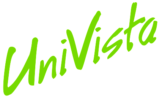Working remotely may seem rather quick and easy. You head on over to your local coffee shop, order your triple-shot, half-caff, no foam, extra hot latte and sit at your favorite table in the corner. You double check to make sure no one is looking over your shoulder, pop open your laptop and get to work. Right? Well, it’s actually a little more complicated than that. Staying secure in a non-secure work place comes with some much needed extra steps to keep your company data away from prying eyes.
How to stay safe
First, keep your items close to your person. According to Gartner, one laptop is stolen every 53 seconds. If you have to run to the restroom or just pick up your coffee at the stand, make sure to bring your laptop and expensive belongings with you. If you’re worried you might step away without grabbing them, remember to turn on your “Find my Device” function.
Be cautious of public Wi-Fi
If you can avoid it, do so at all costs. Data sent over a public Wi-Fi can be by intercepted by bad actors both inside the establishment and in the parking lot. Does your cell phone have hotspot capability? Consider using this method instead. Also, consider turning off your Bluetooth on your computer and phone. When you leave your Bluetooth enabled, you’re leaving your device open to vulnerabilities such as unauthorized connections or attacks from nearby intruders.
Keep your antivirus software up-to-date
If you do happen to fall victim to an attack, make sure you have as much support as possible to try and stop it as quickly as possible. Most updates to antivirus software include safeguards against the most recent methods of attack. Having the most current definitions is a surefire way to help be proactive vs reactive.
Virtual Private Network (VPN)
Connecting to your company data is best done over a Virtual Private Network, or VPN. A VPN “extends a private network across a public network, and enables users to send and receive data” within this tunnel across shared or public networks. This encrypted connection allows a user to connect to his/her company infrastructure so they can use email and software over a secure environment.
Make sure to change your password
Password complexity and changes are often glossed over by the everyday user and yet can be the first step in preventing cyber-attacks. Make sure to change your password at least every 30 days and follow these generic password creation rules:
- Do not use any names (e.g., your first name, your middle name, your last name, your logon name, spouse’s name, children’s name, etc.).
- Do not use common information (e.g., license plate number, address, driver’s license number, social security number, telephone number, brand of automobile, etc.).
- Do not use a single, common word (words found in a dictionary).
- Do not use repeating characters or single digits.
- Make your password easy to remember.
- Consider using a “pass phrase” as a password, such as “UniVista is looking out for me!” (I don’t think it’s commonly accepted to use spaces in a password?)
- Use a minimum of 7 characters for your passwords.
- Use both upper- and lower-case letters (e.g., A,a,B,b, etc.).
- Use non-alphanumeric characters (e.g., 1, 2, 3, !, @, etc.).
- Do not re-use the same password for multiple different logins.
While working remotely can increase productivity and decrease employer costs (see our previous article, The Ping: Definition of a Modern Office) safety is still a major priority. If you feel your company would benefit from increasing your employees’ remote work but worry about whether you’re prepared for such an undertaking, feel free to give us a call at 512-832-6209!
Your UniVista Team
*Celebrating 20 Years of Customer Satisfaction*


